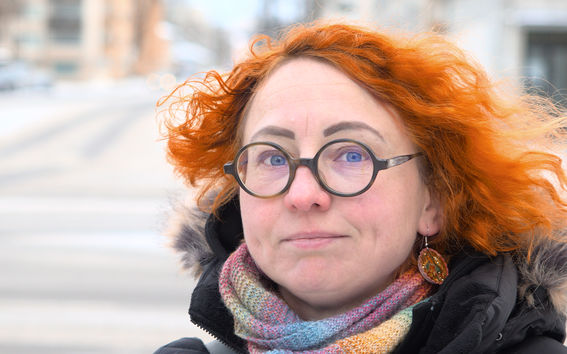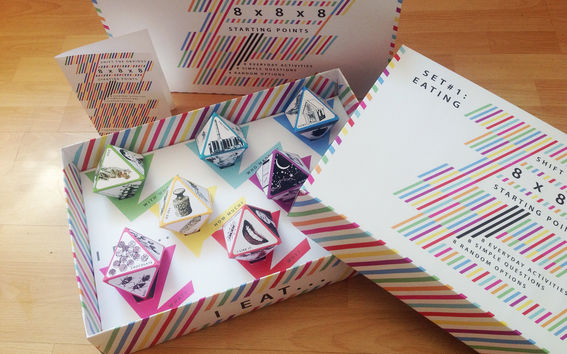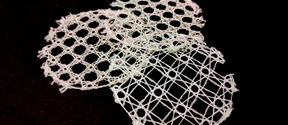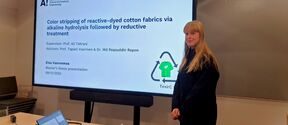‘It's worth a peek behind the familiarity: atypical actions bring joy to everyday life’

What is your research about?
'The research topic emerged from a feeling that the familiar everyday phenomena are far more complicated and marvelous than shown by their surface. The familiar, nevertheless, is not easy to scrutinize precisely because it is so near to us. I needed a tool for reaching the familiar, so I selected to focus on the moments when familiarity momentarily breaks up. These "everyday anomalies" are fleeting curious events that take place in the middle of the familiar flow of everyday life. They are often experienced at a moment when routinized perceptive or cognitive patterns are disturbed by something different from the usual. An anomaly causes one to pause for a moment when things do not proceed as one expected. Anomalies arise spontaneously, but they can also be arranged intentionally.
In the dissertation, I ask how could everyday anomalies be used for recognizing the abundance in the familiar and playing with it? I scrutinize the research question from two viewpoints: experience and production. I figure out what kind of occurrences make people experience moments of confusion in order to find suitable ways to produce new anomalies. My work is related to the avant-garde tradition and it emphasizes the desire to influence the world extensively and to make art open to all. I have developed working methods that are accessible to all people, not just professional artists.
“Reality tinkering” is an artistic approach, a way of working, developed during this research process. It is possible for everyone as it does not require special skills or large resources. It can be made either by interrupting the familiar flow of everyday life or by focusing on the details in everyday life to discover their versatility more deeply.'
Oona TikkaojaCompleting the study during covid times gave me a new perspective on how important it is to be able to rejoice in the miracles nearby."
What's important in it?
'Reality tinkering is an ethical method that aims to cause an appreciative and participatory attitude towards the world. It is essentially about the both-and mindset, instead of the either-or mindset. Reality tinkerers are able to see both the intended use of the things they work with and the unorthodox possibilities hidden in them. Working with the anomalies can be seen as a strategy for making one’s life one’s own by investigating the near environment.

This makes it possible for a person to remain enchanted by phenomena one already has around her, and may decrease the need to continually chase after something new.
In my dissertation, I present a few game-like tools I have developed for anyone to use to help plan atypical actions. I also amassed a collection of stories of atypical events, which can be used as inspiration to revitalize everyday life. I have also analyzed these anomalies and found typical characteristics in them. In addition, I have made seven artistic experiments, self-organized atypical actions. They can be viewed and tools downloaded at everydayanomalies.com.'
What can it lead to?
'Working with everyday anomalies provides an opportunity to take advantage of the abundance around us and thus ease our constant longing for something new. I believe it can both calm our unrest and bring more sustainable solutions to building a happy life.
I started my research ten years ago. Due to the pandemic and accelerating environmental problems, it is now much more relevant than it was then. I myself am an avid traveler and researcher of new environments, but the situation now requires one to stay at home and in the surrounding nature. Completing the study during covid times gave me a new perspective on how important it is to be able to rejoice in the miracles nearby.
On the basis of my research, I claim that it is possible, at least sometimes, to maintain curious and appreciative attitude towards the world. This attitude does not take anything for granted or shallow, but instead shows the multiple possibilities in the familiar. In this dissertation, reality tinkering is offered as one possible approach to gain this attitude.'
Oona Tikkaoja defended her thesis Reality Tinkering. An Artistic Approach to the Abundance of the FamiliaratAalto University 12 March 2021.
More information:
Oona Tikkaoja, oona.tikkaoja@aalto.fi, Tel. +358406744188
Results of the reseach and tools for reality tinkering: everydayanomalies.com
Read more news

Learning Centre opening hours during Christmas and year-end holidays
Thank you for the past year and have a wonderful holiday season!
Smart textiles are reshaping our understanding of materials – and interspecies communication
The PAST-A-BOT research project, funded by the European Research Council (ERC), is developing soft, intelligent textiles that could one day function as rescue robots, sound-sensing agricultural fabrics, or assistive clothing. At the same time, the project aims to rethink the way we approach materials research.
Master’s student showcases efficient color stripping of cotton fabrics
On December 9, master’s thesis student Elsa Vuorenmaa from the Textile Chemistry Group presented the results of her research on color stripping of reactive-dyed cotton fabrics.






